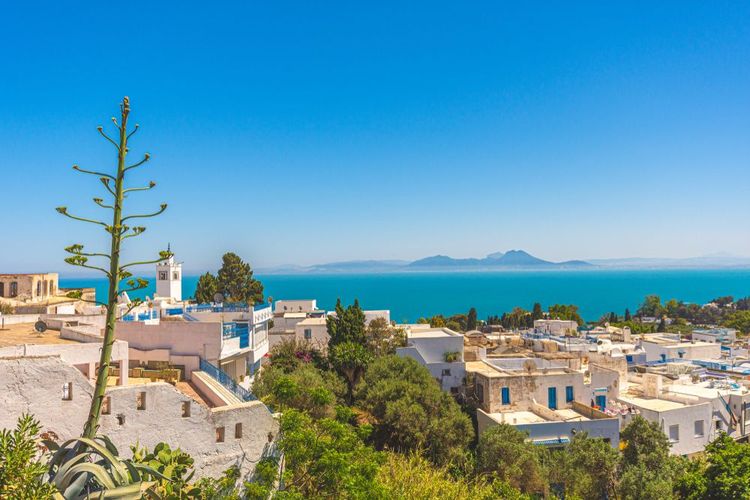A must-see on any trip to Tunisia, it boasts the best-preserved amphitheatre of the Roman Empire, as well as a fascinating archaeological museum housing the finest collection of mosaics in the country after that of the Bardo Museum in Tunis.
Tunisia boasts an impressive historical and cultural heritage for such a small country. The Carthaginians, Romans and Muslim dynasties have left us a wealth of treasures, seven of which are UNESCO World Heritage Sites: the medinas of Tunis and Sousse, Kairouan and its Great Mosque, and the ancient sites of Carthage, El Jem, Dougga and Kerkouane. This itinerary takes in all of them, as well as the Bardo Museum in Tunis, the medinas of Nabeul and Tunis, and the Roman sites of Thuburbo Majus, Bulla Regia and Chemtou.
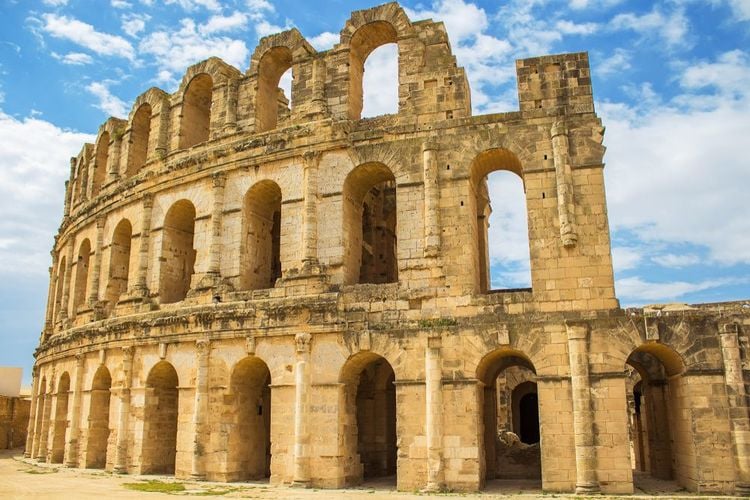
The UNESCO-listed El Jem coliseum, the highlight of this itinerary
- © Liya_Blumesser / ShutterstockDay 1: El Jem, its amphitheatre and museum
The El Jem coliseum
El Jem is the third largest coliseum in the world, after those in Rome and Verona. The largest vestige of the Maghreb is also the best preserved of the Roman Empire. Take a look: this Roman amphitheatre is 148 metres long, 122 metres wide and 36 metres high! It could hold between 27,000 and 30,000 spectators... Don't miss a trip down into the underground passages to see the lion's den and the gladiators' dressing rooms! These underground galleries are unique in the world, having disappeared from the coliseums of Italy. Allow a good hour for the visit.
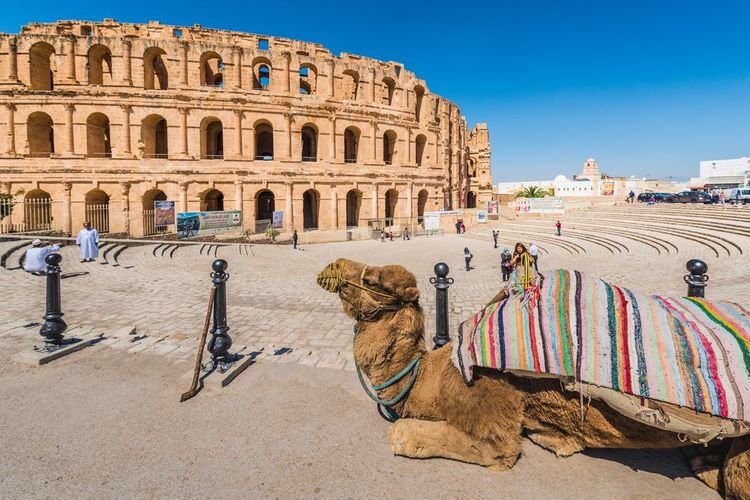
A dromedary stands guard in front of the El Jem colosseum
- © Anibal Trejo / ShutterstockEl Jem Archaeological Museum
There's more to El Jem than its famous coliseum. It would be a shame not to walk the 500 metres between the imposing ancient amphitheatre and the archaeological museum, especially as the ticket is valid for both sites! Quite simply, this museum houses the finest collection of mosaics in Tunisia, after the Bardo Museum in the capital. A place steeped in history, to complement your visit to the El Jem amphitheatre!
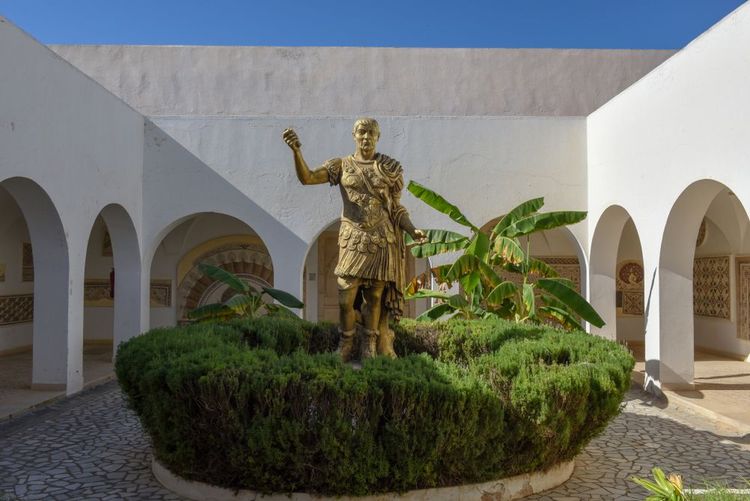
The museum is housed in a reconstructed Roman villa with patio
- © Stefano Ember / ShutterstockWhere to sleep?
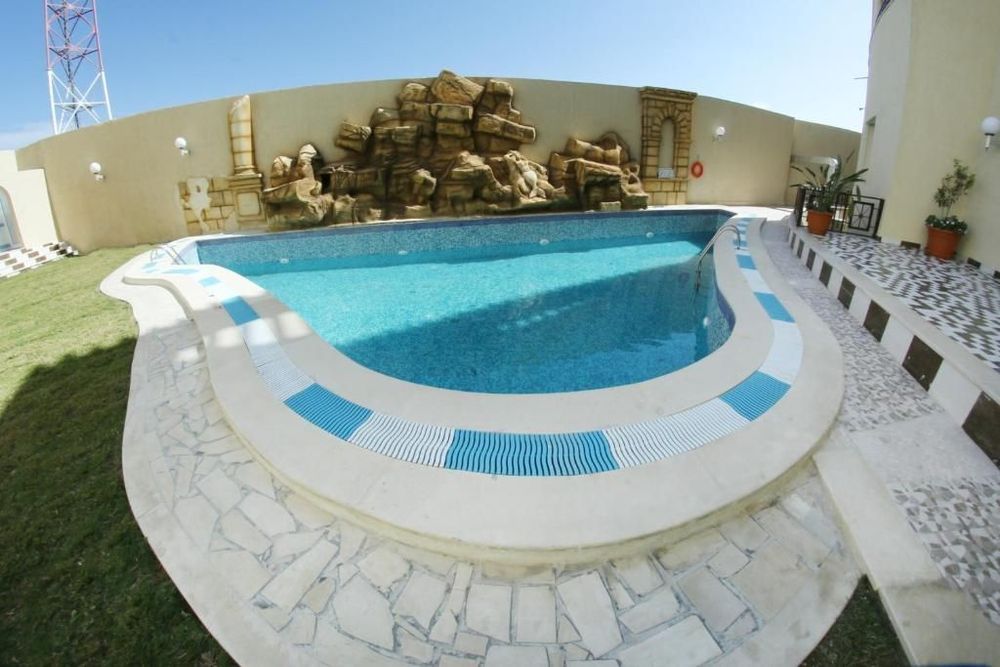 Tunisia
Tunisia
Hotel Julius
Located in El Jem, the 4-star Hotel Julius offers a garden, a shared lounge, a sun terrace with swimming pool and a buffet breakfast.Day 2: Visit to Kairouan
Allow a good hour's drive to cover the 70km between El Jem and Kairouan. Considered to be Islam's fourth holiest city after Mecca, Medina and Jerusalem, Kairouan, situated in the heart of the country, has been on UNESCO's World Heritage List since 1988. Nestling far from the coast in an austere region, this city of 300 mosques is one of the jewels of Tunisia's heritage. It has retained all its character as a traditional town and is home to one of the most majestic and ancient mosques in the world.
The Kairouan Mosque
It's the symbol of Kairouan, one of the oldest and most beautiful mosques in the world, and one of the most impressive monuments in the whole of the Maghreb! And yet, the ticket only costs 10 Tunisian dinars, or just over three euros... A ticket that also gives access to other sites in the city. Allow a good hour to do the rounds. The best thing is to have a guide explain the history of the site, whose religious prestige has made Kairouan the 4th holiest city in Islam. It is particularly famous for its prayer hall. Unfortunately, unless you're a Muslim, you won't be able to enter this room, which is decorated with dozens of marble columns and houses the oldest minbar in the Muslim world! But you can still have a quick look.
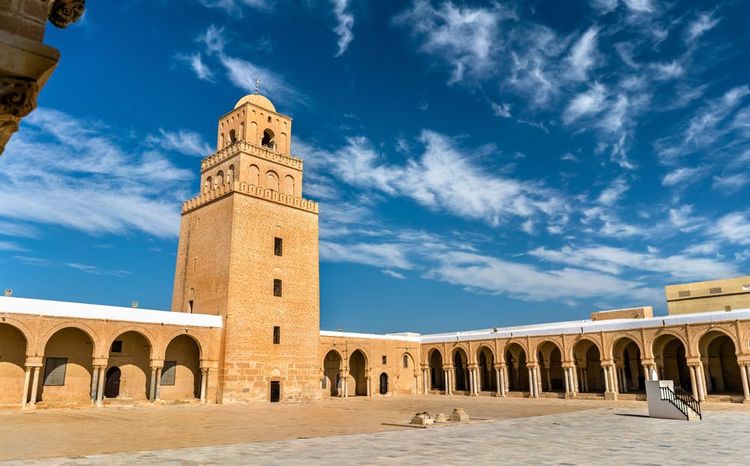
the UNESCO-listed Kairouan mosque is a marvel!
- © Leonid Andronov / ShutterstockThe medina of Kairouan and its Arabian Nights souks
Are you ready to plunge into the exoticism of the Thousand and One Nights? There's no Ariadne's thread to help you find your way through this labyrinth of narrow streets and vaulted passageways, where you can practise your bargaining skills! The city's speciality is carpets (there's even a museum), but they might take up too much space in your suitcase? If not, opt for leather sandals or local pastries! Must-sees in the medina include the Mosque of the Three Doors, the bey's house (now a carpet temple), and the mysterious Bir Barrouta well, which dates back to the 8th century, when the town was founded. It is said to be linked by underground rivers to the sacred well in Mecca! Don't hesitate to drink the sacred water drawn by a dromedary!
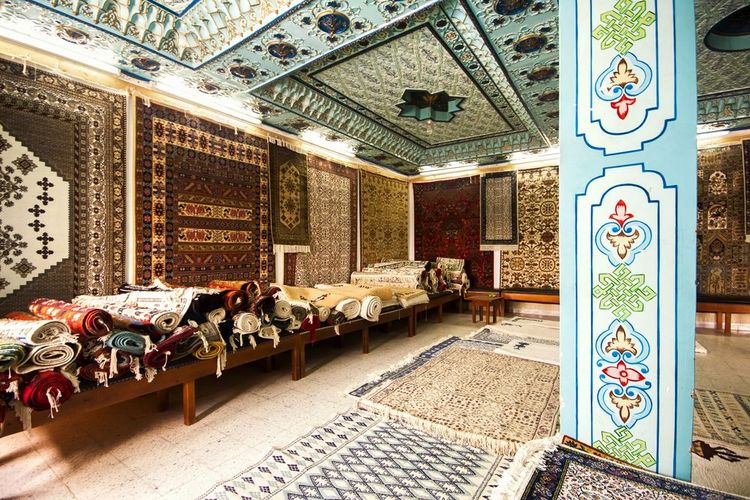
Kairouan is the capital of carpets
- © Marques / ShutterstockWhere to sleep?
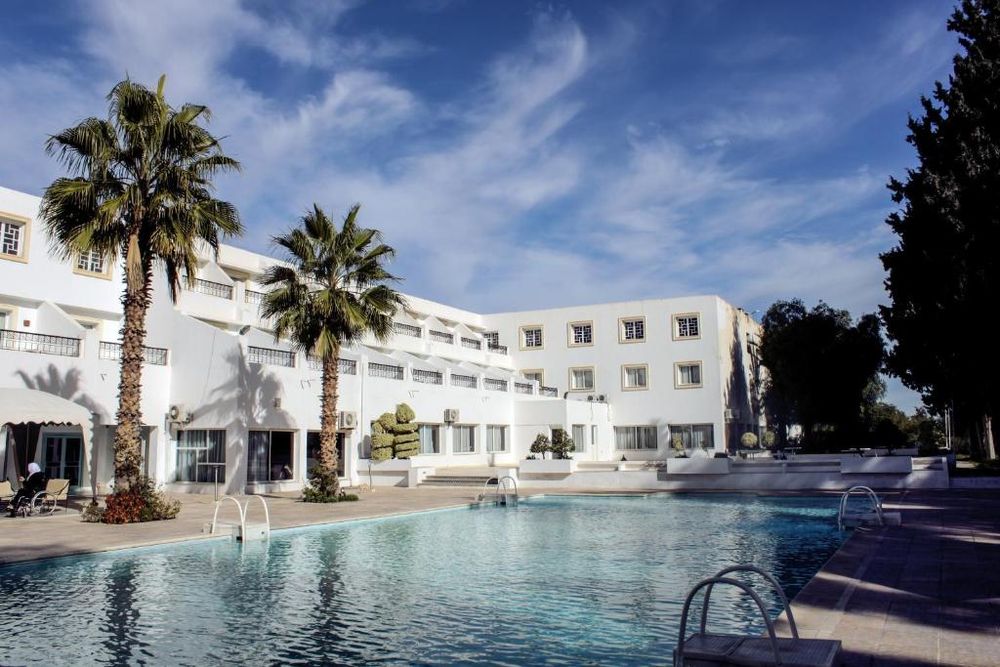 Monastir
Monastir
Hôtel Continental
Hotel located 1.3 km from the Great Mosque of KairouanDay 3: Thurbo Majus and Nabeul
Thuburbo Majus
The site of Thuburbo Majus is vast and there are still many treasures to be discovered- only a sixth of the 40 hectares have been excavated! The ruins of Africa's largest capitol can be admired here. Its remains can even be seen from the banks of the Oued Miliane, Tunisia's second largest river. The most remarkable finds are on display at the Bardo National Museum, including mosaics and the head of a colossal statue of Jupiter. It's perfect timing, as it's scheduled for the end of your cultural tour of Tunisia.
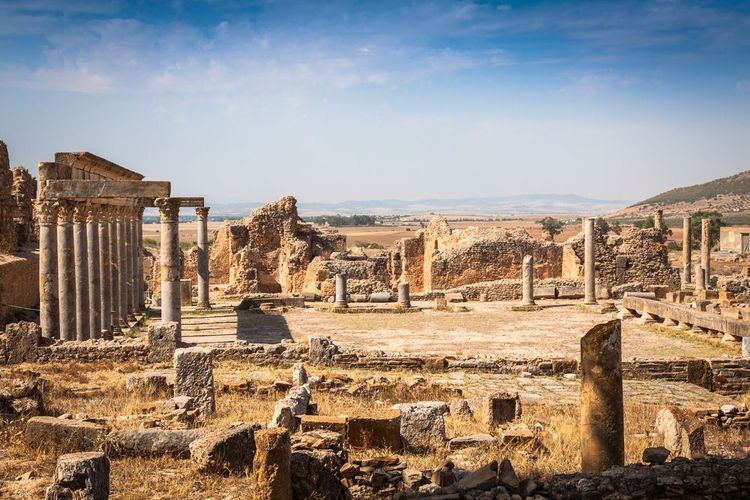
The Capitoline ruins of Thuburbo Majus
- © Lukasz Janyst / ShutterstockNabeul
The UNESCO heritage site of Kerkouane is isolated at the tip of Cap Bon, almost 3 hours' drive away, so it makes more sense to stop off in Nabeul, 1 hour 40 minutes' drive away, halfway along the route. This is the perfect opportunity to visit its preserved medina, admire its great mosque and bargain in the souk for a brightly painted ceramic dish, one of the specialities of Tunisia's pottery capital.
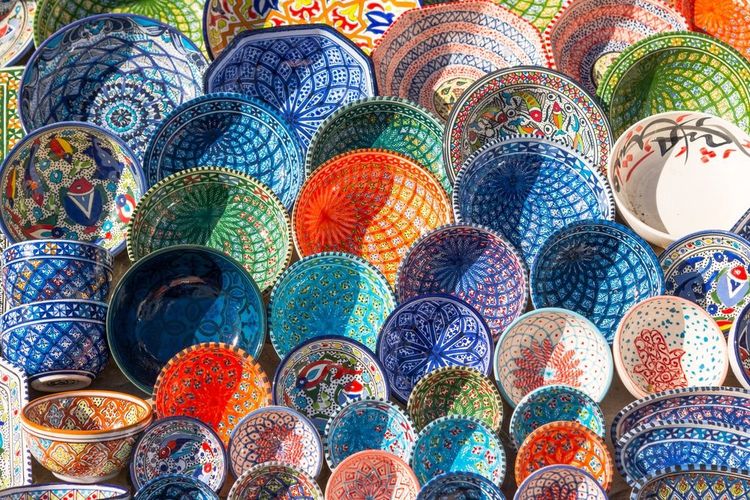
Nabeul is the capital of ceramics and pottery
- © Andreas Wolochow / ShutterstockWhere to sleep?
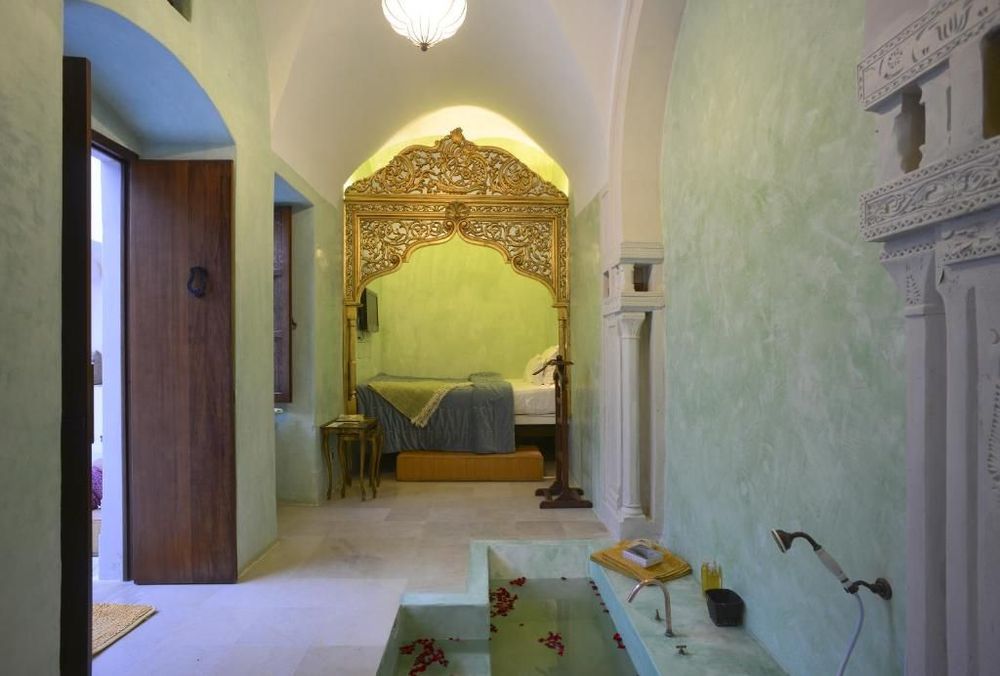 Tunisia
Tunisia
Dar Sabri
Bed and breakfast in the medina of Nabeul, less than 1 kilometre from the beachDay 4: Kerkouane and the Bardo Museum in Tunis
There's just 1h30 to drive through Cap Bon, a peninsula off the country's main tourist routes, famous for its jasmine and orange blossom, to reach Kerkouane.
Kerkouane
Very little is known about the history of Kerkouane. We haven't found any written sources, everything is based on excavations! Even the name of the site, Kerkouane, has nothing to do with the name of the original city, which was given much later. The city was razed to the ground by the Romans in 310 BC, but the Punic remains (Phoenician and Carthaginian) are unique! In fact, this Phoenician city, which was abandoned during the First Punic War, was never rebuilt by the Romans (like Carthage, for example), leaving us with the only remains of a Phoenician-Punic city that has survived. Excavations only began in the 1950s, and it wasn't until 1977 that the largest Punic sanctuary in the entire western Mediterranean was unearthed! The site was listed as a UNESCO World Heritage Site in 1986.

Ruins of Kerkouane
- © WitR / ShutterstockThe Bardo Museum in Tunis
Dougga is more than 3 hours away, so it's best to stop off in Tunis, which is already a 2-hour drive from Kerkouane. This is the perfect opportunity to visit the famous Bardo Museum, which houses the finest collection of mosaics in the world. It's also an opportunity to admire masterpieces from sites we visited during our cultural tour of Tunisia. The museum is housed in a sumptuous nineteenth-century palace that is well worth a visit in itself. With 32,000 m² of exhibition space retracing the history of Tunisia, there's plenty to see!
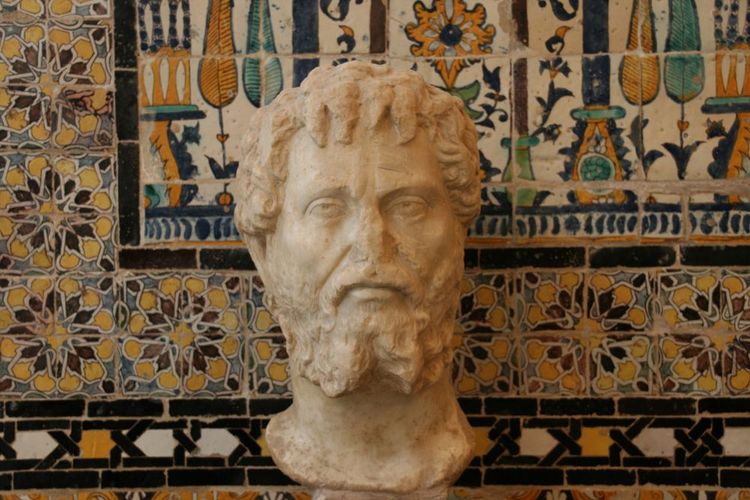
The Bardo Museum houses the world's finest collection of Roman mosaics
- © Laiotz / ShutterstockWhere to sleep?
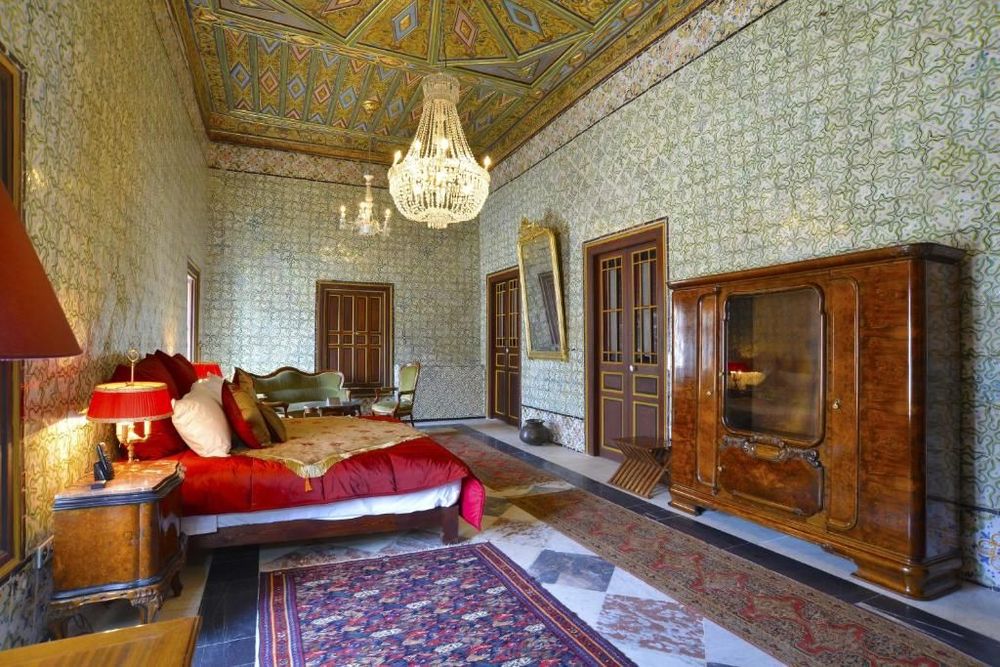 Tunisia
Tunisia
Bayram Palace
In the heart of the Tunis medina, the Palais Bayram, a 5-star hotel, boasts an exceptional 18th-century architectural ensemble.Day 5: Dougga, Bulla Regia and Chemtou
We're getting up early because three archaeological sites await us today, taking us all the way to the Algerian border! 1? hours after leaving the UNESCO-listed medina of Tunis, we arrive at another World Heritage site: Dougga.
Dougga
Perched on a 571-metre-high hill, the site is immense and very rich, with many of the works found there on display at the Bardo Museum in Tunis. Listed as a UNESCO World Heritage Site, Dougga remains off the beaten tourist track. In short, you won't be disturbed by the crowds!

The Capitol of the ancient city of Dougga
- © Ben M_O / ShutterstockBulla Regia
Bulla Regia is a 1h15-minute drive from Dougga. Bulla Regia is famous for its floors decorated with rich mosaics. The motifs of these mosaics have given their nicknames to the most beautiful residences: the House of the Hunt, the House of Fishing and the House of Amphitrite are the most famous.
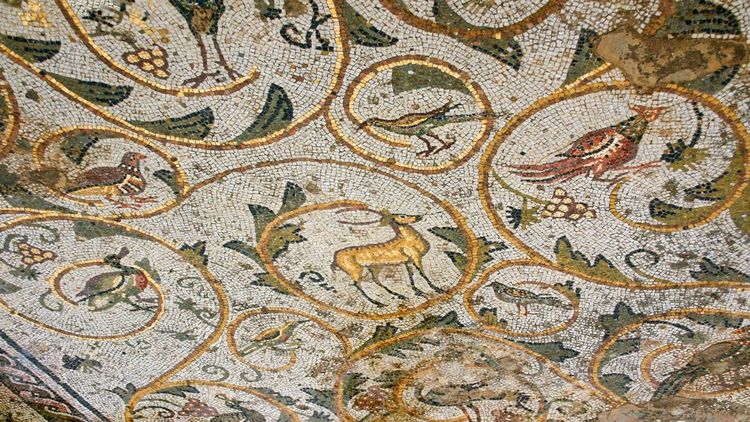
Bulla Regia's superb mosaics
- © bumihills / ShutterstockChemtou
Just twenty minutes from Bulla Regia, the small town of Chemtou has been renowned since ancient times for its unique pink, yellow and green marble. The marble columns of Chemtou have adorned the villas of the wealthiest people for centuries. Its treasure, a clay vase with 1,648 gold coins, is on display in the museum adjoining the ancient site.
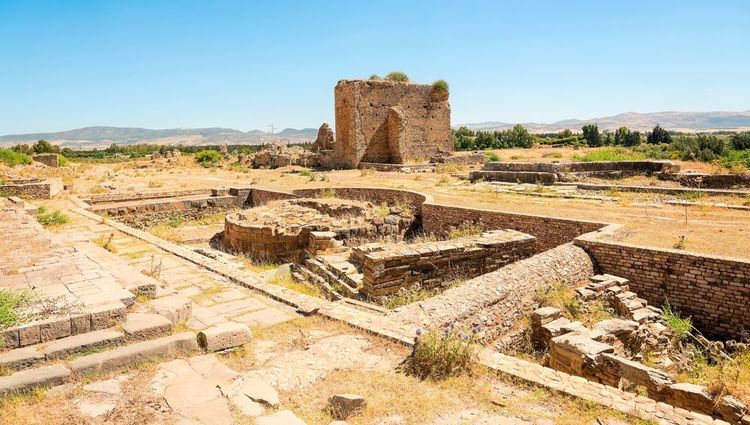
Ruins of Chemtou: forum and Roman basilica
- © Andreas Wolochow / ShutterstockWhere to sleep?
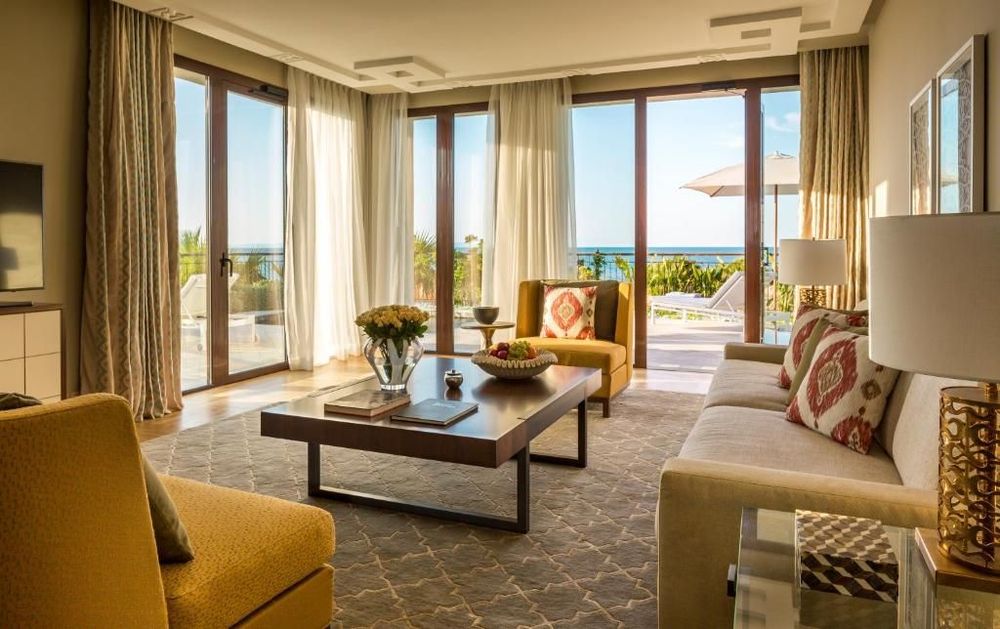 Tunisia
Tunisia
Four Seasons Hotel
5* hotel with tennis court, garden, restaurant and bar on siteDay 6: Carthage
Not much remains of the great city of Carthage, founded in 814 BC by Dido, a Phoenician princess from Tyre. It was completely destroyed by the Romans in 146 BC. But don't worry, there's plenty to keep you busy on this huge 180 m² site! This fascinating tour will take you from cathedrals to amphitheatres, from Termes to mysterious sanctuaries, from museums to the remains of Punic ports. All in the footsteps of Hannibal, Julius Caesar, Saint Louis, Honoré de Balzac and even Winston Churchill! A mythical place, the capital of Carthaginian civilisation, listed as a UNESCO World Heritage Site.
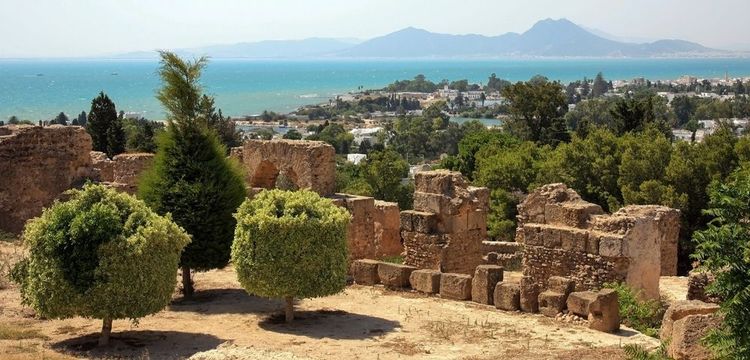
Like Sidi Bou Saïd, Carthage enjoys superb panoramic views of the Gulf of Tunis and Cap Bon.
- © LeniKovaleva / Shutterstock Tunisia
Tunisia
